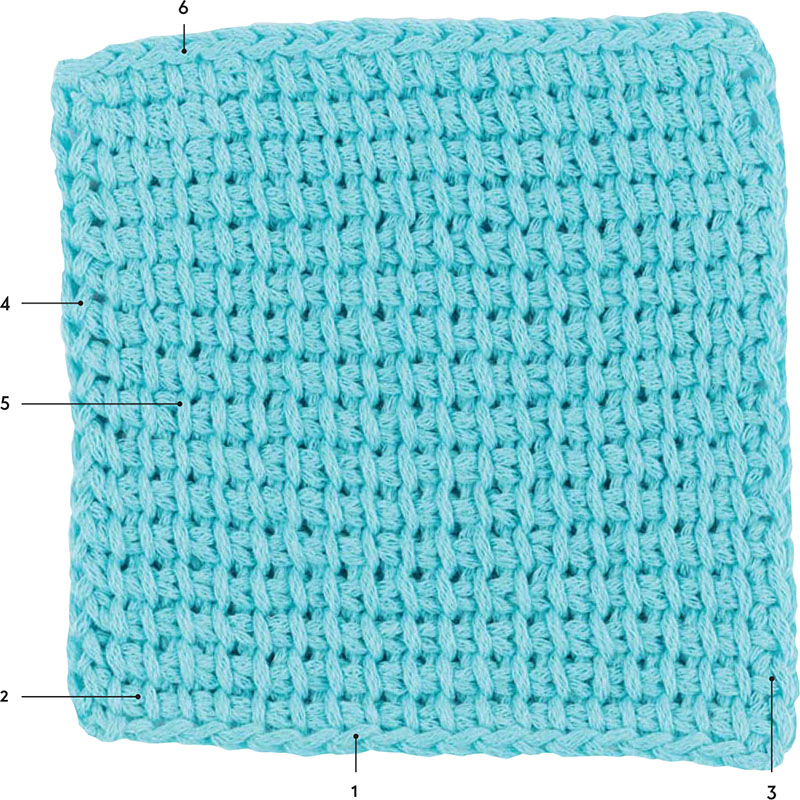

1. FOUNDATION CHAIN
Loops are picked up from the back bump of the foundation chain.
2. FOUNDATION ROW
The first row of stitches will always be created the same way regardless of stitch pattern.
3. FIRST STITCH
The first stitch of a row is not worked into and always remains the same regardless of the stitch pattern.
4. END ST
The last stitch of a row will always be worked the same regardless of the stitch pattern.
5. ROWS
Each vertical bar represents one row.
6. BIND OFF
Stitches are bound off with a slip stitch.
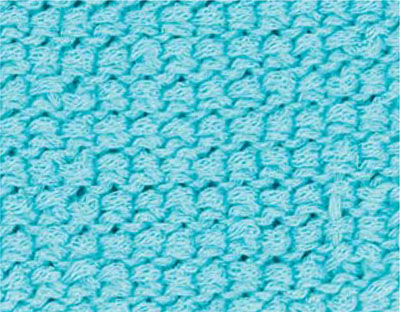
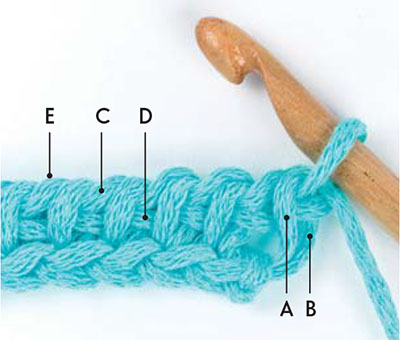
A. Front vertical bar
B. Back vertical bar
C. Horizontal chain – top strand
D. Horizontal chain – bottom strand
E. Horizontal chain – back bump
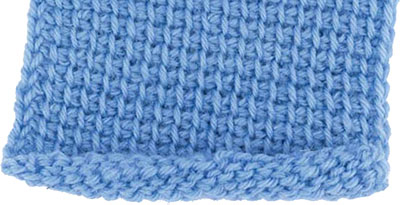
How do I stop my Tunisian crochet from curling? This is the most common complaint about Tunisian crochet and a question I get asked most often.
Tunisian crochet curls because in many of the stitches the bulk of the stitch lies at the back of the work, causing the fabric to be heavier at the back than the front, thus creating an unequal tension and pulling the work in.
Some stitches, such as simple stitch and especially the knit stitch, will curl more than others as they have a flat, smooth front with a bumpy back. However stitches such as purl or reverse stitch have a bump on both the front and back of the fabric, causing the tension to even out somewhat.
The good news is that the curl can be tamed quite easily. My top two favourite methods are to use an extended stitch in the foundation row and blocking.
Try out some of these methods for yourself and notice the difference they make:
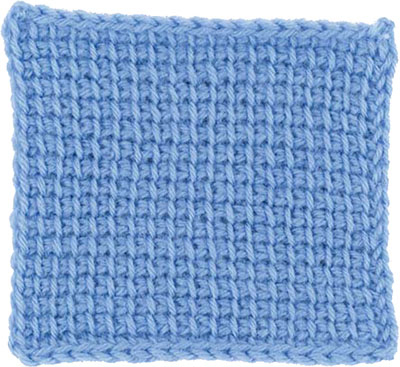
This is my favourite method of controlling the curl. It is almost undetectable and blends in nicely with the remainder of your work. As with all methods, it will still benefit from blocking but will not need very much taming.
When picking up loops in your foundation row, add a ch 1 after you pick up the loop (extended stitch).
Blocking really does help in taming the curl. Blocking works by settling the stitches into place, causing the fabric to relax and straighten out (see Blocking for different methods).
When working Tunisian crochet, it’s generally recommended to use a hook 1–2 sizes larger than recommended for your yarn weight. Using a bigger hook can help by making your stitches looser, but you will most likely still have some curl and still need to block your work.
It’s important to try to keep your beginning chain and stitches fairly loose with Tunisian crochet. Too tight stitches will cause your work to curl more than a looser stitch. There will still be some curl and your work will still need to be blocked.
Working a row or two of Purl or Reverse stitch at the beginning of your work will help to reduce the curl but it will create an obvious row of ‘bumpy’ stitches that may not blend in with the rest of your work.
Adding a border of regular crochet in conjunction with blocking works well to tame the curl and can also become a design feature.